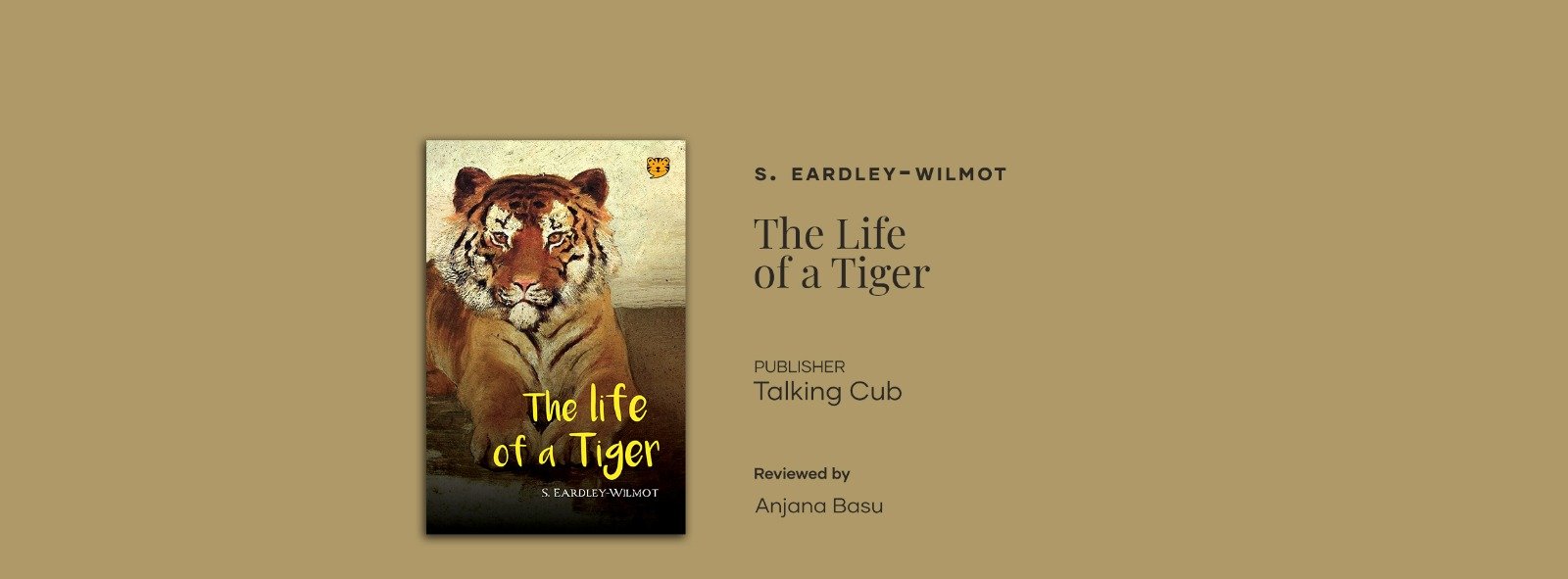

Forestry officer and conservationist, Eardley-Wilmot had spent 25 years if service in India, exploring the awe-inspiring beauty of the North Indian jungles and its wildlife. This verges on Jungle Book territory in many ways but here the hero is a tiger. Eardley-Wilmot follows the life of a tiger in the jungle from its days as a cub to its adult life. His prose is filled with vivid description though children might find the language old world in its charm. Words lke ‘quiescent’ are no longer part of any child’s vocabulary, though they ought to be.
The fact that Eardley-Wilmot has spent many years in the jungle is obvious, from his detailed descriptions of foliage and animal behaviour. There are sounders of pigs – again a collective word that most have forgotten – herds of buffaloes and elephants and the consent issues that tigers face when they come into contact with them.
Eardley-Wilmot describes the bone chilling aspects of a buffalo charge which decimates the tiger family. He describes the hated packs of dhole, savage killing machines that are feared by the entire jungle. One tiger, the remaining male wanders through the forests and we are given descriptions of hunts and encounters with wild life including a graphic description of a fight with a boar in the Himalayan foothills with blood flying – in this case the tiger wins.
There are also forest fires that endanger all the animal population. The author makes it obvious that a tiger’s life is an arduous one, as in fact are the lives of all animals and even that of the villagers who have to protect their herds from animal attacks. Eardley-Wilmot briefly mentions man eaters once attributing it to a tiger losing its natural ability to hunt.
What tiger lovers may find a little odd is that the tigress who starts the story is still living with her mate – normally tigresses with cubs give birth and bring up the cubs on their own since male tigers are not necessarily paternal. Nor do they usually share kills with their mates. However male tigers have on occasion known to have been good fathers so anything is possible but mostly the mother brings up the cubs and teaches them to hunt till they are old enough to start life on their own. Nor does he talk about the tiger’s sense of smell – though yes, tigers do hunt by sight and hearing.
The book comes full circle, tigers find splendid mates and discover family lives for themselves – the author makes the tigers more human here. However, with the passing of time the intrusion of people into tiger habitats becomes a problem – the ‘oppression of man’ the author terms it. He points out that tiger human encounters, even if the tiger is not a man eater can end tragically and the result is not good for the jungle with trees lopped down and game scared away. Not to mention Government orders to shikaris to shoot down man killing tigers – which was originally what Jim Corbett was hired to do. Tigers can be captured and die in cages or die in encounters or of excruciating old age – life in the wild and for the wild is not always kind.
In all the book is a slow moving detailed read that puts a different perspective on jungle life and tigers for the reader written at a time when environmental conflicts had not yet begun to get prominence.
